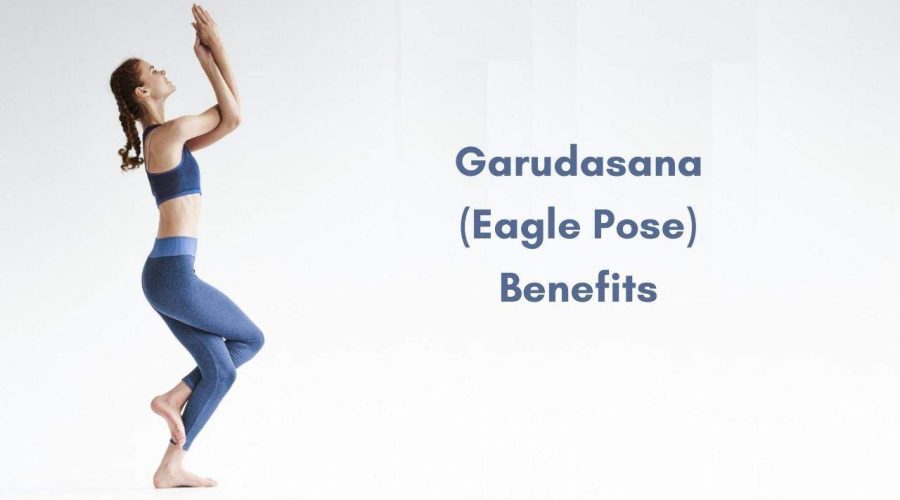Garudasana (Eagle Pose) in Yoga: Know the Steps, Benefits, and Precautions
According to Hindu mythology, ‘Garuda’ is the ‘King of Birds’ and Lord Vishnu’s vehicle. The Garuda has a white face, curved beak, crimson wings, and a golden body. Garudasana is a standing + balancing position that requires flexible shoulders and powerful ankles.
It belongs to the category of intermediate yoga positions and should not be attempted by novices. The entire weight of the body is supported by only one leg in this stance. Ankles, calves, thighs, hips, knees, and shoulders are the body parts it targets. This pose has a relaxing impact on both the mind and the body.
Garudasana is a Sanskrit name made up of two words whose meaning has inspired its English name.
Garuda = Eagle
Asana = Posture
Garudasana (Eagle Pose) Steps
- Bend your knees slightly and elevate your left leg, balancing your body on the right leg.
- Place the left thigh on top of the right.
- Wrap your left leg’s shin around your right leg’s calf.
- Hook the top of your left foot into the calf of your lower right leg. The body should be balanced on the right leg.
- Raise your arms in front of you, parallel to the floor, palms facing up. Cross your arms again, this time with the right arm above the left.
- Bend your elbows so that your forearms are parallel to the floor. Wrap the left forearm around the right forearm and under it. Your left hand’s fingers should be firmly planted on your right palm. Maintain a straight spine.
- Concentrate your attention on a fixed spot around 4-5 feet distant. This is the last and most important position. Hold the stance for 15 to 20 seconds while inhaling deeply.
- To return to the beginning position, carefully release the arms first, then the legs. Take three deep and long breaths, then repeat on the opposite side, switching leg and arm positions.
Each side should be practiced 2-3 times.
Garudasana (Eagle Pose) Benefits
- Ankles are strengthened, and shoulder joints are more flexible.
- Improves concentration, which is beneficial for meditation practices.
- Balance and coordination are improved as a result of this activity.
- Urinary issues can be relieved with this supplement.
- Male reproductive organs benefit from it.
- Calf muscle spasms are avoided.
- It helps with sciatica and rheumatism in the legs.
- Regulates renal function and treats prostate issues.
- Calves, shoulders, upper back, hips, and thighs are all stretched.
Garudasana (Eagle Pose) Precautions
Beginners may find it difficult to maintain balance at first; however, fixing the attention on a fixed spot might help. To create balance, make small moves at a time. You can also try the posture by first following the directions for the arms, then the instructions for the legs. If you wish to do so, begin by standing in Tadasana and moving through the following steps: 3, 4, 1, 2, 5, and 6. You might find it easier to keep the balance this way. Practice the methods outlined above once you’ve mastered good balance. After you’ve mastered the stance, you can close your eyes for better concentration.
- If you’ve recently suffered a knee, ankle, or shoulder injury, avoid practicing Garudasana.
- If you have any of the following conditions, you should avoid doing the eagle pose: Obesity, frequent headaches, high or low blood pressure, or asthma are all symptoms of obesity.
- Eagle Pose should also be avoided by pregnant ladies.
Frequently Asked Questions
1. Why is it called Eagle pose?
The name Eagle comes from an eagle’s acute and alert eye, which can see 4-8 times better than the ordinary human. This stance aids in the development of intuition and clarity. Swing your right arm beneath your left arm first, crossing your elbows and wrists. Fingers are below the nose and palms face each other.
2. Can men do Eagle Pose?
Because of their larger frames, guys find eagle to be a famously challenging stance. Because of the wrapping motion required in eagle posture, people with longer legs and shoulders have a lot of trouble.
3. Who should not perform Garudasana?
Bone and joint injuries are common. It should not be done during the third trimester of pregnancy. It should also be avoided if you have low blood pressure, a headache, or difficulties with your inner ear. In Garudasana, alignment is crucial, especially of the hands, arms, and thighs.
4. Is Garudasana a hip opener?
Even if you can’t tuck your foot behind your calf, you can still reap the advantages of garudasana, which include improved balance, lower-body strength, hip opening, and shoulder and back stretching.

